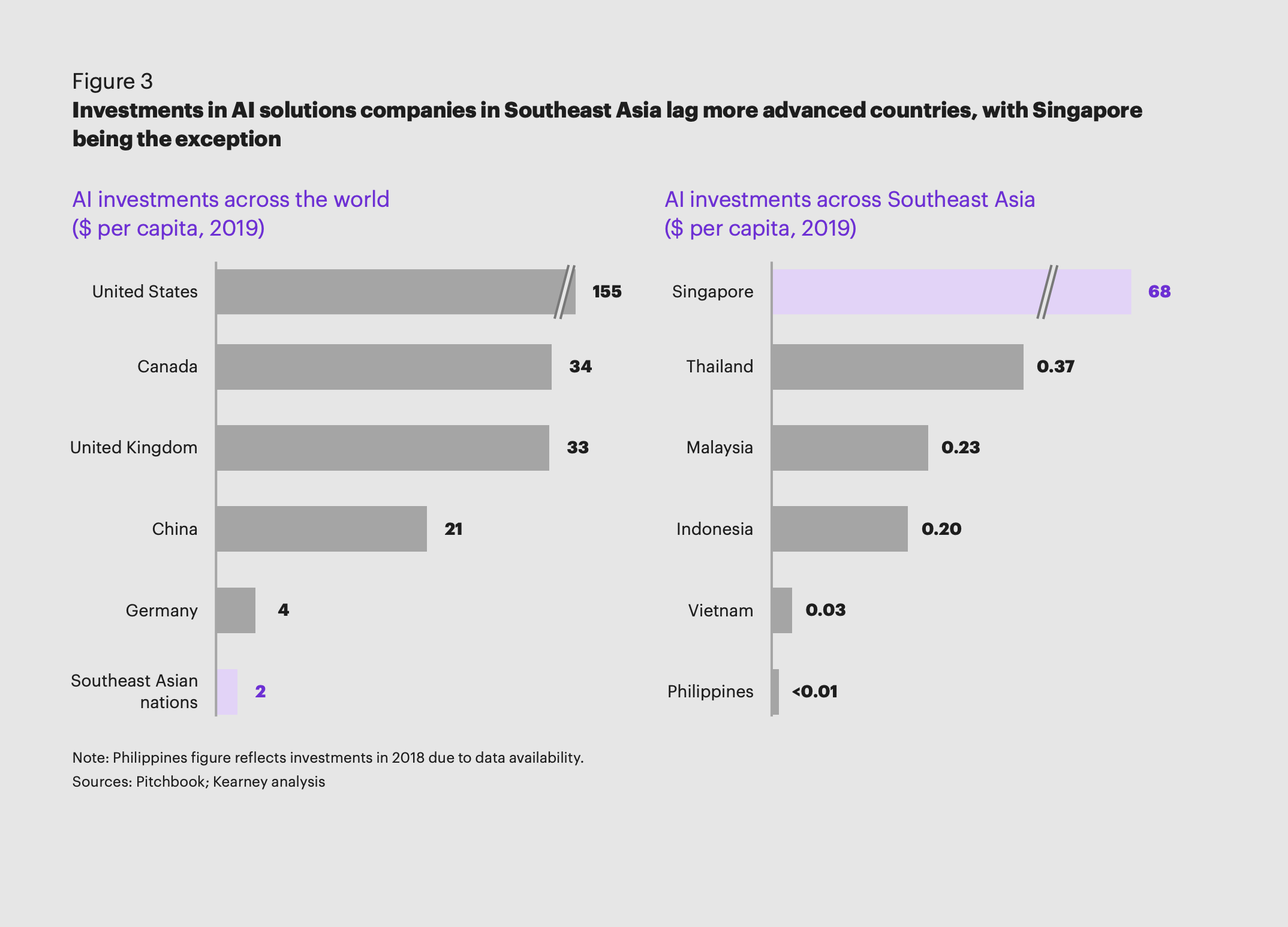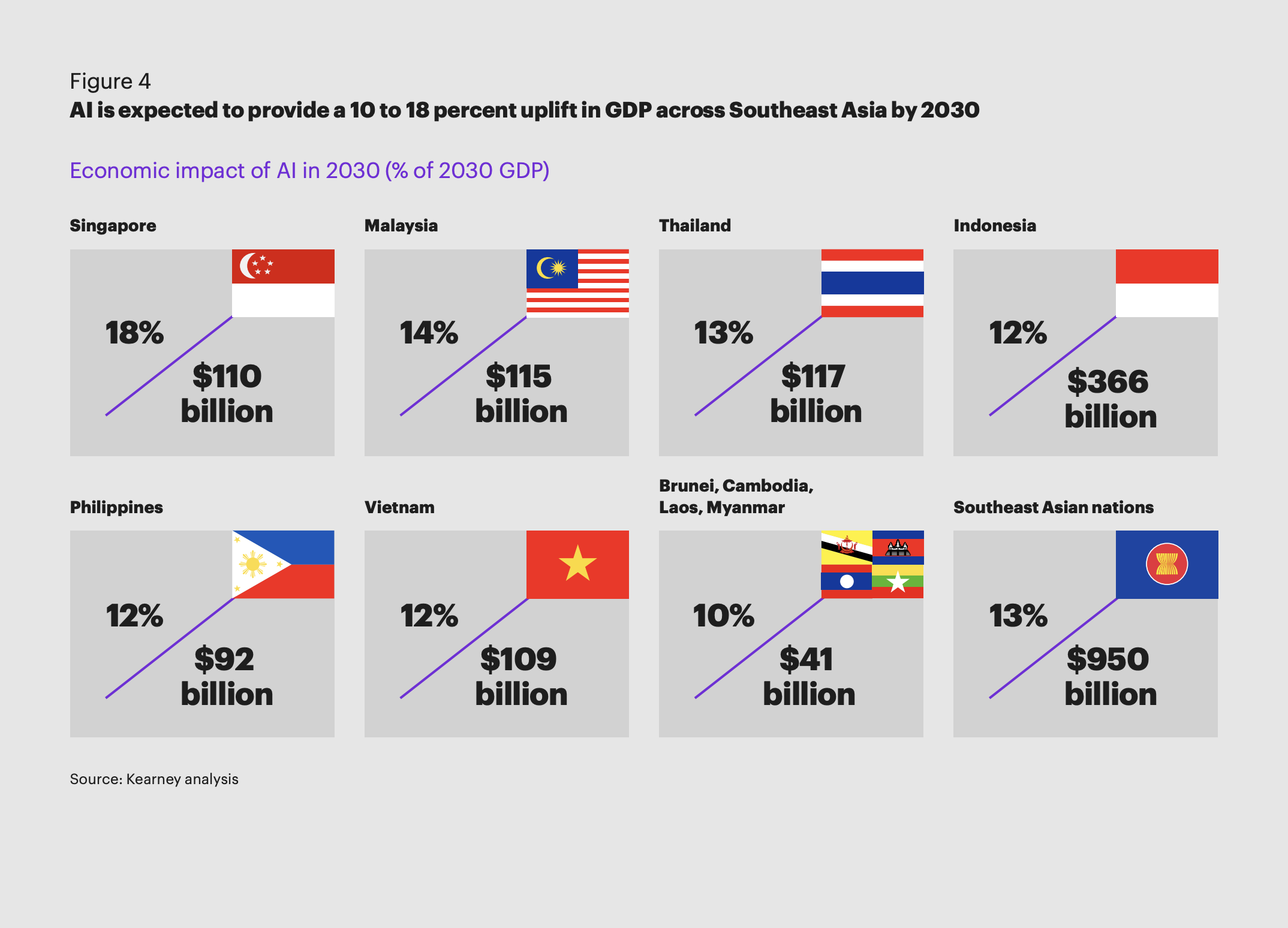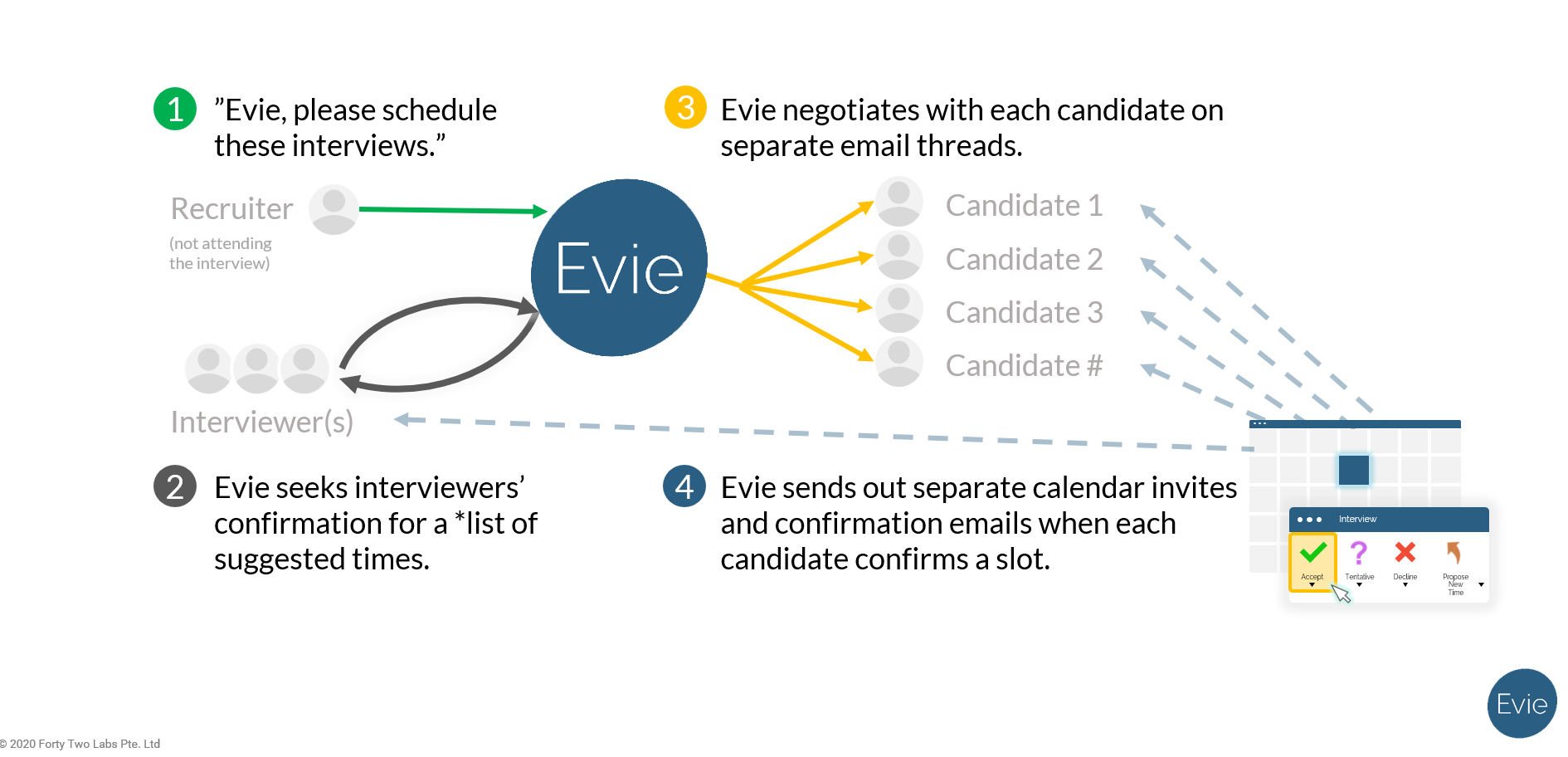
A warm welcome to the Deeper newsletter, dear reader!
You’re reading this because, just like us, you’re tired of the non-stop tech and startup news cycle, where there seems to be something new and trendy to keep up with in Southeast Asia.
What you want to know about is the important stuff that matters—period.
And that’s what we’re bringing to you. We’ll dive deep into a trending topic in Southeast Asian tech, and their impact on society (i.e. me and you).
Sound compelling? Subscribe now, and we’ll send it straight to your inbox:
Without further ado, let’s dive in.
Hey there, it’s Rachel here!
It’s kinda ironic that I got inspired to write this edition of Deeper after reading an article about GPT-3, a robot that can write articles that look as though they’re written by a human. Yes—it wrote that article. How I wish it could write this article for me too.
Wait. Is that the future? Robots doing everything?
When I went to Hai Di Lao for hotpot on the weekend (the tomato soup base is amazing), a robot whizzed by our table carrying plates of food. There’s also a robot named Miquela with 2.9 million followers on Instagram—it’s estimated that she (or well, her creator) earns almost £9 million (US$12 million) a year!
Will it just be a matter of time before robots rule the world?
Well, not really. All of the robots mentioned above still need some human input to get things done. GPT-3 requires instructions from a human on what to write, a human waiter needs to pick up and serve the plates from the Hai Di Lao robot, and there’s a whole team of humans behind Miquela’s Instagram account.
It looks like robots won’t be able to completely replace humans, but they can make our lives easier. In this edition, I’ll explore how artificial intelligence solutions have been developed and implemented in Southeast Asia.
Let’s dive in.
TL;DR:
- It’s still early days for artificial intelligence in Southeast Asia
- What are the potential benefits of adopting AI in Southeast Asia?
- There are still challenges hindering AI adoption in the region
- Some applications of AI in Southeast Asia thus far
- Robots still can’t fully replace humans…yet
It’s still early days for artificial intelligence in Southeast Asia
Artificial intelligence (AI) refers to the simulation of human intelligence in machines that are programmed to think like humans and mimic their actions. I guess that’s why whenever the topic of AI comes up, the first thing people think of is, “am I going to lose my job to a robot?”
That’s a valid concern, but not to worry. It is artificial intelligence after all—it won’t be able to fully replace a human. Automations usually apply at the task level, so AI is likely to change jobs that humans perform, rather than eliminate them outright.

Robots can be cute, but they won’t replace humans
But what is the overall state of artificial intelligence advancements? Compared to the top two AI hubs in the world, the United States and China, Southeast Asia lags way behind in terms of AI adoption. That’s not to say that there isn’t some progress, though.
Singapore leads the region in AI investments. In 2017, AI Singapore (AI.SG) was launched to bring together public and private players to advance AI research, development, and practical use in Singapore.
Singapore also launched its National Artificial Intelligence Strategy in 2019 and committed over S$500 million (c. US$370 million) to fund activities related to AI under the Research, Innovation, and Enterprise 2020 Plan. The plan includes five national projects in the areas of healthcare, education, municipal services, logistics, and immigration.
Furthermore, Singapore’s R&D expenditure on AI totaled US$68 per capita in 2019. In contrast, the Philippines, Vietnam, Malaysia, Thailand, and Indonesia had committed less than US$1 per capita. Nonetheless, many Singapore-based start-ups have operations across the region.

Levels of investments in AI solutions across SEA
Having said that, the other countries have started to jump on board this year. Indonesia introduced its own national strategy for AI, Malaysia announced the development of an AI park, which is a private sector rather than a government-led initiative, and Vietnam launched an AI platform to boost its national digital transformation program. The Philippines has also assembled a task force to come up with an AI road map.
Thailand has an interesting story. AI courses were first introduced to Thai universities back in 1975 and the first AI laboratory was established at the Department of Computer Engineering, Kasetsart University in 1992. While it does not have a formal national strategy, Thailand has come up with national AI ethics guidelines, and its Digital Government Agency plans to integrate AI into government services as part of the country’s push towards digitalization.
It’s clear that the region recognizes the importance of adopting artificial intelligence capabilities and is making some headway. But what exactly are the benefits that AI can bring?
The potential benefits of adopting AI in Southeast Asia
According to a report by Singapore-based global investor EDBI and consulting firm Kearney, AI could add US$1 trillion to the region’s GDP by 2030. The impact will differ across countries due to the varying maturity of each country’s AI infrastructure and adoption readiness, and 80% of the potential value comes from fewer than 20% of the use cases—mainly in sales and marketing, as well as supply chain management.

The predicted economic impact of AI across SEA
In sales and marketing, the next product to buy (NPTB) and individualized offerings are huge drivers of value. Indonesian e-commerce platform Tokopedia worked with Appier, a supplier of AI-based marketing technology, to tailor product recommendations to users. This enabled them to increase the total number of transactions by 202% and revenue jumped 179% month over month.
In addition, McKinsey found that across all industries, early adopters of AI in the ASEAN region reported higher profit margins relative to their peers, particularly in manufacturing, financial services, and transportation and logistics industries.
Overall, the value of AI comes from the ability to automate routine tasks, minimize human errors, and analyze large amounts of data at speed and scale.
Take the accounting industry, for example. Remember how I said that AI is likely to change jobs, not replace them? With AI, accountants can save time on administrative tasks and focus more on analyzing and interpreting the data to extract real value for the business. They can use the data to assist with decision-making in real-time and even forecast potential issues.
Speaking of potential issues… all of these benefits sound great, but is Southeast Asia positioned to take advantage of them?
There are still challenges hindering AI adoption in the region
It appears that there are some major shortfalls that the region has to address in order to realize the potential benefits of AI.
Firstly, as previously mentioned, there is a stark gap between the R&D expenditure on AI in a country like Singapore versus the rest of the region. National governments in other countries have to do more to prioritize investments in AI research and computing infrastructure, including minimizing any regulatory blockers and incentivizing innovation.
Furthermore, the workforce needs to be upskilled to utilize AI solutions. Contrary to popular assumptions, this doesn’t necessarily mean that more technical talent is required since many AI solutions can be implemented without deep technical expertise. Rather, it is more important to upskill people with relevant business or domain knowledge to raise awareness about AI and identify and develop more new AI use cases.
The AI vendor ecosystem in Southeast Asia is also very fragmented, making it difficult for companies to find and work with suitable AI providers. Government support in setting up testing environments is crucial to allow for the development of local use cases, as well as allowing small businesses access to the AI vendor ecosystem without immediate or major financial commitments.
Finally, there is the issue of regulations and AI governance. More harmonized regulations across Southeast Asia are required to facilitate cross-border data flows since the region is so interconnected—23% of trade is inter-ASEAN. Otherwise, it could really hinder the development and use of AI where data needs to be accessed from multiple jurisdictions.
Some applications of AI in Southeast Asia thus far
Despite these challenges, there have already been quite a few applications of AI in Southeast Asia across various industries.
Healthcare
Healthcare is a booming industry for AI-based solutions. Singapore startup UCARE.AI helps Parkway Pantai provide patients with more accurate, personalized bill estimates based on their medical condition and medical practices. In the first few months of the system being up and running, it provided a 60% improvement over the prior bill estimation system.
There is also a whole range of healthtech startups utilizing AI in Malaysia, from telehealth, where patients can get connected to healthcare professionals virtually, to digital health programs customized to each patient’s needs.
In the health insurance space, AI has the potential to optimize claims processing, reduce fraud, and improve health-outcome forecasts, which can result in better preventive care and lower claims. The only use case so far has been Singaporean insurer NTUC Income utilizing IBM Watson to digitally process 14,000 hard-copy claims per month.
Human Resources
Singapore startup Evie.ai offers an AI interview scheduling tool that acts like a real person, interacting with interviewers and candidates in natural language, allowing for interviews to be scheduled 10 times faster. It also provides data that can be used to improve recruiting efficiency.
Pulsifi is another Singapore-based startup that aims to improve the recruitment process by using an algorithm to predict top candidates with 97% accuracy. Using data, it is able to predict each person’s work styles, role fit, culture fit, and other outcomes.
Sales and Customer Service
Indonesian startup Kata.ai enables businesses to automate millions of customer interactions using chatbots, cutting at least 30% of operating costs compared to employing human agents. It also collects data from commonly-used social and messaging apps such as Facebook, Twitter, WhatsApp, BBM, LINE, and Slack to help businesses better understand their customers’ behaviors and create engaging marketing campaigns to generate leads or sales.
And this is just scratching the surface—we’d be here all day if I tried to cover all of the AI-based solutions that have popped up in Southeast Asia. Suffice it to say, there have definitely been developments in the region, and with increased investment and government support, many opportunities lie ahead.
Robots still can’t fully replace humans…yet
Ultimately, AI can only be used to complement and enhance what humans can do.
Sure, it’s kind of freaky that people are following “virtual influencers” as though they’re real human beings, but there are human beings working tirelessly in the background to keep up the narrative and image of these so-called robots.
On the plus side, they don’t need to deal with bad hair days or spend hours to get the perfect photo. But they’ll never be able to do an in-person meet and greet and shake your hand, right?
Oh wait—you’re still worried about whether robots can take over your job? Go ahead and check out this website. Apparently, there’s only a 4% chance of writers’ jobs being replaced by AI and robots. Take that, GPT-3! flips hair







